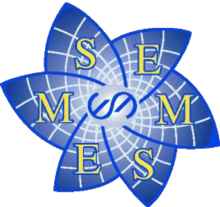Weirder maths
This is a continuation of the previous book Weird Math by the same authors. We find more stories from the realm of popular mathematics. Some of the elements were already discussed in their previous book, but appear here in a slightly different context. Most of the stories told can also be found in other popular science or popularizing math books. The two books together form some kind of a round-up of all these curious or interesting (I would not call them weird) tales related to mathematics and mathematicians that can be found elsewhere, but perhaps not all collected in one (or two) books like it is done here. There are so many different items that an index would have been welcome, but unfortunately that has not been included.
The subtitle of this volume is `at the edge of the possible', which is in my opinion a bit of an exaggeration, but it can be ascribed to the enthusiasm of the authors (an astronomer-science writer Darling and a young math prodigy Banerjee) who just discovered these stories often known for a while already. But it is a good thing they want to transfer their enthusiasm to generations of newcomers.
What is in this volume that was not in the first one? Here is a telegraphic survey per chapter:
"How to get out of that" deals with mazes: mythological (king Minos, Ariadne, and the Minotaur), historical (Chartres cathedral a.o.), imaginary (Borges), natural (different caves), computer games (Adventure), amusement parks, none of which is really related to mathematics, but there is also Euler and the bridges of Köningsberg, with the development of graph theory, the Internet graph, and escape algorithms from a maze and more.
Something similar holds also for the other chapters: they are collections of diverse topical stories that are sometimes loosely connected to mathematics that is lingering in the background, but in some cases mathematics comes prominent to the foreground but always without being technical.
"The vanishing point" deals with the number zero and more generally number systems, but also with perspective, infinitesimals, the limit, and the vacuum in physics.
"Seven numbers that rule the universe" starts with physics, but then discusses the top-seven mathematical constants: 0 (zero), 1, π, e, i = √-1, γ (Euler constant), and ℵ₀,
"Through the looking glass" is about symmetry. It includes the definition of a group, and the solution of algebraic equations which gave rise to Galois theory, and symmetry breaking (quasi crystals, and cosmic microwave background radiation).
"Maths for art's sake" is obviously relating mathematics and art. There are many historical mutual influences in sculpture, paintings, architecture. Some more recent examples are Escher and Dalí. That the golden section is characterizing the ideal ratio that defines beauty, is only approximately true.
"Beyond the imaginary" describes how numbers developed from integers to rationals, reals, complex numbers, quaternions, octonions and surreals.
"Tilings: plain, fancy and downright" is obviously about tilings: the Alhambra, the 17 wallpaper groups, irregular tilings, and quasi crystals.
"Weird mathematicians" do exist of course: Erdős, Pythagoras, Galois, Ramanujan, Hamilton, Turing, Boltzmann, Cantor, Gödel, Bourbaki (although the latter is not really a person).
"In the realm of the quantum" sketches the development of quantum physics and hints to the necessity to develop quantum mathematics. Determining whether or not a spectral gap exists turns out to be an undecidable problem, which touches the foundations of mathematics with very important consequences for physics.
"Bubbles, double bubbles, and bubble troubles" is a classic topic of soap bubbles, but now also turns out to be important in nanofoams as well as in cosmic bubbles.
"Just for the fun of it" is about puzzles (tangram, soma cube, towers of Hanoi, Chinese rings,...) and great puzzlers (Gardner, Dudeney, Lucas,...).
"Shapes weird and beautiful" is an interesting chapter of peculiar 3D objects: Gabriel's horn, minimal surfaces, Piet Hein's super egg, Reuleaux triangle, Gömböc, rattleback, sphericon, the horned sphere, and the amplituhedron.
"The great unknowns" is about unsolved problems or at least problems that were only solved after a long period like the classical Greek problems (trisecting an angle, squaring the circle, doubling the cube), Fermat's last theorem, the continuum hypothesis, the Poincaré conjecture and the Riemann hypothesis.
"Could math have been different" might relate to our use of a decimal system, but that is inspired by humans having accidentally 10 fingers. A more fundamental question is about mathematics being invented or discovered. Is π a universal constant? Would aliens have essentially the same mathematics as we have? It all depends on the axiomatic system one starts from.
With their two books the authors bring a pretty general survey of what is found scattered in many other popularizing books on mathematics. The true mathematics behind all these stories is barely touched upon and the narration is kept at the story-telling level, so that it is really written for a general public. It is brought in a playful and entertaining way: no deep philosophical contemplations, no complicated technical discussions. These are all stories in the margin of mathematics (which is fortunately much broader than Fermat's margin), but not really including the mathematics itself, and it is intended to be that way because there is no reference list to look up further details or recover the source of their story.
